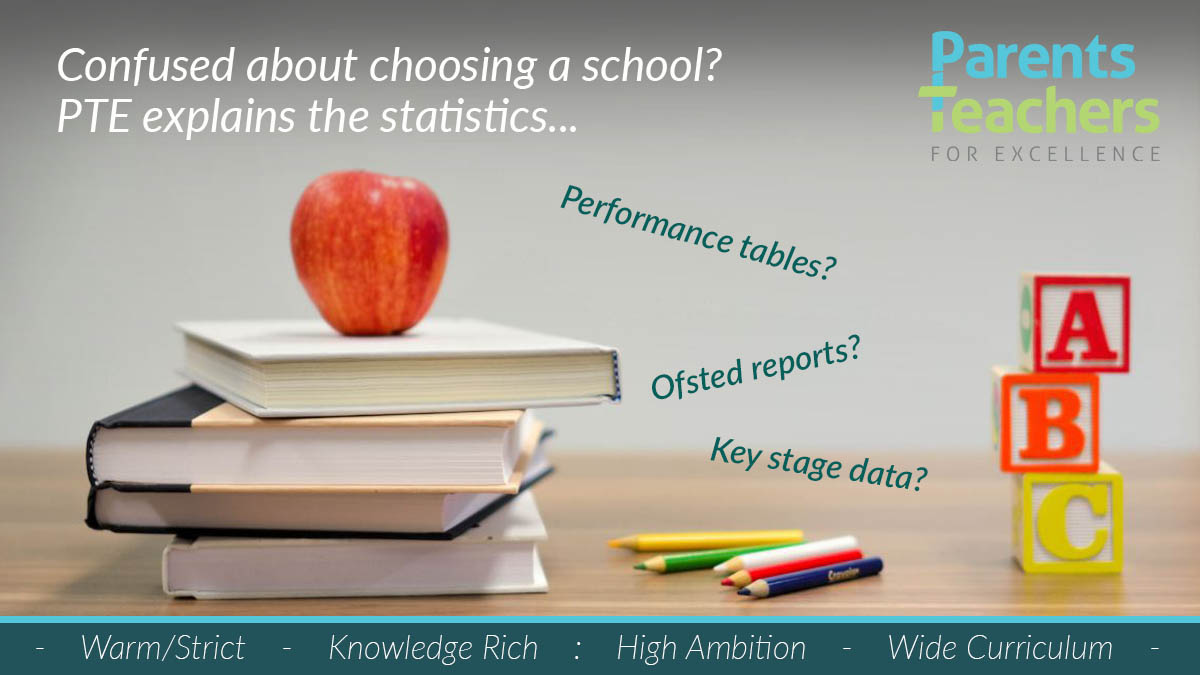Choosing A School: Coming up with a Shortlist
There is no doubt that the best – indeed only – way to get a proper feel for a school is by visiting it during the day. Seeing with your own eyes how staff and pupils get along with one another is vital, as is meeting the Head as they will set the whole tone for the school.
However, before you visit a school there is a lot you can look at to gauge how it’s doing in terms of standards and direction. If you’re in an area that has lots of schools, some research will help you to come up with a shortlist of places so that you don’t have to visit every one. And if you’ve not got many schools nearby, research will also give you a sense of the kind of things to focus on and ask about when you do visit those.
There are a whole bunch of ways of getting a sense of a school before visiting, formal and informal. Next time we’ll examine the informal. Today, we’re going to look at two “official” sources of information: Department for Education Performance Tables, and school inspection reports from Ofsted.
Before getting stuck into these though, a really important health warning: they only give a very partial view of a school, and by definition they’re always at least a bit out-of-date. Indeed, given that exams and Ofsted inspections didn’t occur during the pandemic, they will be pretty out-of-date for a while to come, so it’s important to not put too much emphasis on one or the other.
They are though still a handy starting point to prompt some further questions when you visit places.
Department for Education Performance Tables
The “Find and compare schools in England” site is pretty amazing. You can enter a specific school name, town, Local Authority, or postcode, and it shows you all the schools within that category or a certain distance – either as a list or on a map.
If you search by Local Authority, you will be presented with all the schools, with a tab for each of the different school measures that are published – results at age 11, 16, and 18; absence; Ofsted judgements; and staff and finance metrics. These are the “league tables” people talk about, as you can rank the schools at the click of a button according to their results or absence and so on.
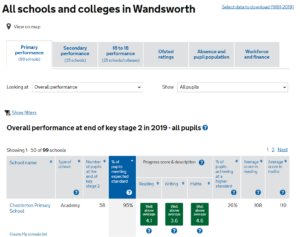
Much more useful than where a school comes versus other schools on some measure, or another is the information available when you click on an individual school.

If you search by postcode, you get a massive list you can filter according to different criteria – age range, if they’re single-sex or not, current Ofsted grade, and religious character (or otherwise).
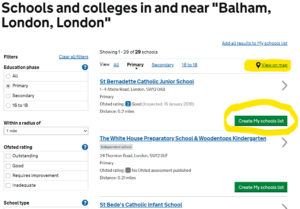
Handily, you can collate a list of schools you want to look at in more detail, to save you having to go through the search process repeatedly.
For each school you will see handy basic information like its address, who the head is, and so on. It also has a link to the school website, and to the school’s Ofsted report as well.
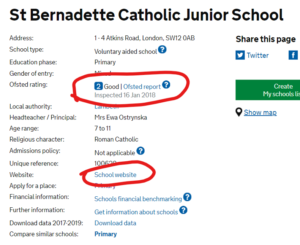
Scroll down a bit further and there are a few tabs with more useful information – including results from Key Stage 2 SATs for primaries, or GCSEs and A-levels etc for secondaries.
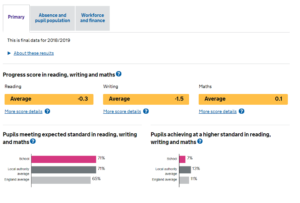
Something worth looking at is the pupil absence and population information. The site shows you what the absence rate for the school is, and quite a detailed breakdown of the pupil population, including how many are on roll, the number of boys and girls, what proportion of pupils are or have been eligible for free school meals, the proportion who do not speak English as a first language. Each statistic is presented alongside what the average is for England as a whole.
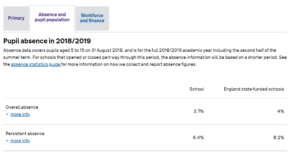
Again, don’t put too much emphasis on any of these figures – they’re just there to help families and others get a general sense of the school and its pupils, and start to build a picture of what it’s like.
Remember, by definition the vast majority of schools will have “average” test results, and lower than average absence doesn’t necessarily imply a negative – it could be that the school is doing a great job supporting children who would otherwise struggle to be in school at all.
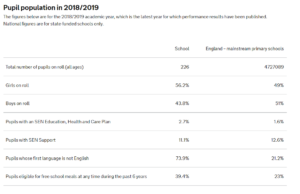
And, again – much of this data is a few years’ old now, so at best they’re useful to ask questions about what the school has done recently to improve things.
As you look at different school’s information, you’ll start to get a sense as to which aspects are more important to you than others. And this stage is a good point to start seeing what Ofsted has had to say when they’ve visited…
Ofsted reports
The way that Ofsted has inspected and reported on schools has changed hugely over time. In addition, the frequency with which schools have been visited varies loads – some haven’t been inspected for over a decade.
Oh, and if a school has become an “academy”, there may not be an inspection report available for it as technically speaking it is a “new” school, and the previous Ofsted result belonged to the “old” school.
Because of all these quirks and changes, you may find that the Ofsted report for a school you’re interested in is non-existent, long, or short in length, and potentially really old.
Therefore, unless it’s really recent you can only use it as one element of the picture you’re building up, and as a starting point for questions to ask the Head if you decide to visit.
We suggest you read reports and see if any bits jump out as significant to you. If they do, make a note of them, and when you have read a few, see if any common themes are obvious – these are clearly the things that matter most to you and so should be what you focus on during a visit.
One final thing – don’t let an Ofsted grading sway you one way or the other.
A school that was judged “good” or “outstanding” might not still be like this – or maybe it never was, and the school was just effective at managing what inspectors saw during their visit!
And a school that was deemed “requires improvement” or “inadequate” may well have made huge strides in addressing the areas of weakness identified – especially if they’ve been supported by a strong academy trust.
If you are interested in a school and an Ofsted report has left you with questions, then that’s exactly how it should be!
Note down your questions and keep them to hand for later. From a child’s perspective the most important judge of a school is their parents, not Ofsted…
